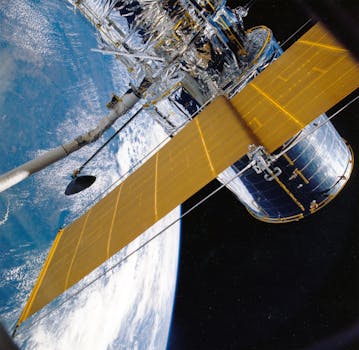Satellite Telecommunications 2023: What’s New and What’s Next? – Satellite Telecommunications

Satellite Telecommunications 2023: What’s New and What’s Next? – Satellite Telecommunications
Satellite Telecommunications has become an essential part of modern communication, enabling global connectivity and facilitating the exchange of information across the globe. With the rapid advancement of technology, the satellite telecommunications industry has witnessed significant transformations in recent years. In this article, we will delve into the latest developments and future trends in satellite telecommunications, exploring the innovative solutions and services that are shaping the industry.
The satellite telecommunications industry has experienced tremendous growth, driven by the increasing demand for global connectivity, the rise of satellite constellations, and the development of new technologies such as 5G and the Internet of Things (IoT). Satellite operators, manufacturers, and service providers are investing heavily in research and development, leading to the introduction of new satellite systems, services, and applications. One of the key trends in satellite telecommunications is the proliferation of Low Earth Orbit (LEO) constellations, which offer faster, more reliable, and cost-effective connectivity solutions.
Advancements in Satellite Technology
Recent advancements in satellite technology have enabled the development of smaller, more efficient, and cost-effective satellites. The use of advanced materials, such as carbon fiber and aluminum, has reduced the weight and size of satellites, making them more fuel-efficient and easier to launch. Additionally, the development of electric propulsion systems has increased the lifespan of satellites and reduced the risk of propulsion system failure. The introduction of reusable launch vehicles has also significantly reduced the cost of launching satellites into orbit.
The development of new satellite systems, such as the Amazon Kuiper Systems and the OneWeb constellation, is expected to provide high-speed, low-latency connectivity solutions to underserved communities and remote areas. These systems will enable the delivery of broadband services, including internet, voice, and data, to areas where traditional telecommunications infrastructure is limited or non-existent. The use of satellite-based connectivity solutions is also expected to play a critical role in the development of 5G networks, enabling the provision of high-speed, low-latency connectivity in rural and remote areas.
Future Trends in Satellite Telecommunications
As the satellite telecommunications industry continues to evolve, several trends are expected to shape the future of the industry. One of the key trends is the increasing use of artificial intelligence (AI) and machine learning (ML) in satellite operations and management. The use of AI and ML will enable satellite operators to optimize satellite performance, predict and prevent system failures, and improve the overall efficiency of satellite operations. The development of quantum computing is also expected to have a significant impact on the satellite telecommunications industry, enabling the creation of unbreakable encryption codes and secure communication channels.
The growth of the IoT is also expected to drive demand for satellite-based connectivity solutions, as the number of connected devices increases and the need for global connectivity grows. Satellite-based IoT solutions will enable the tracking and monitoring of assets, vehicles, and equipment in real-time, regardless of location. The use of satellite-based connectivity solutions will also play a critical role in the development of smart cities, enabling the creation of intelligent transportation systems, smart grids, and other urban infrastructure.
Challenges and Opportunities in Satellite Telecommunications
Despite the significant advancements in satellite telecommunications, the industry still faces several challenges, including the risk of satellite congestion, the need for spectrum management, and the threat of cyberattacks. The increasing number of satellites in orbit has raised concerns about congestion, interference, and the risk of collisions. The development of sustainable and responsible satellite operations practices is essential to mitigate these risks and ensure the long-term viability of the satellite telecommunications industry.
The satellite telecommunications industry also presents significant opportunities for innovation and investment. The development of new satellite systems, services, and applications is expected to create new revenue streams and business models, driving growth and investment in the industry. The use of satellite-based connectivity solutions is also expected to have a positive impact on the environment, enabling the creation of more efficient and sustainable transportation systems, reducing the need for physical infrastructure, and promoting the development of renewable energy sources.




